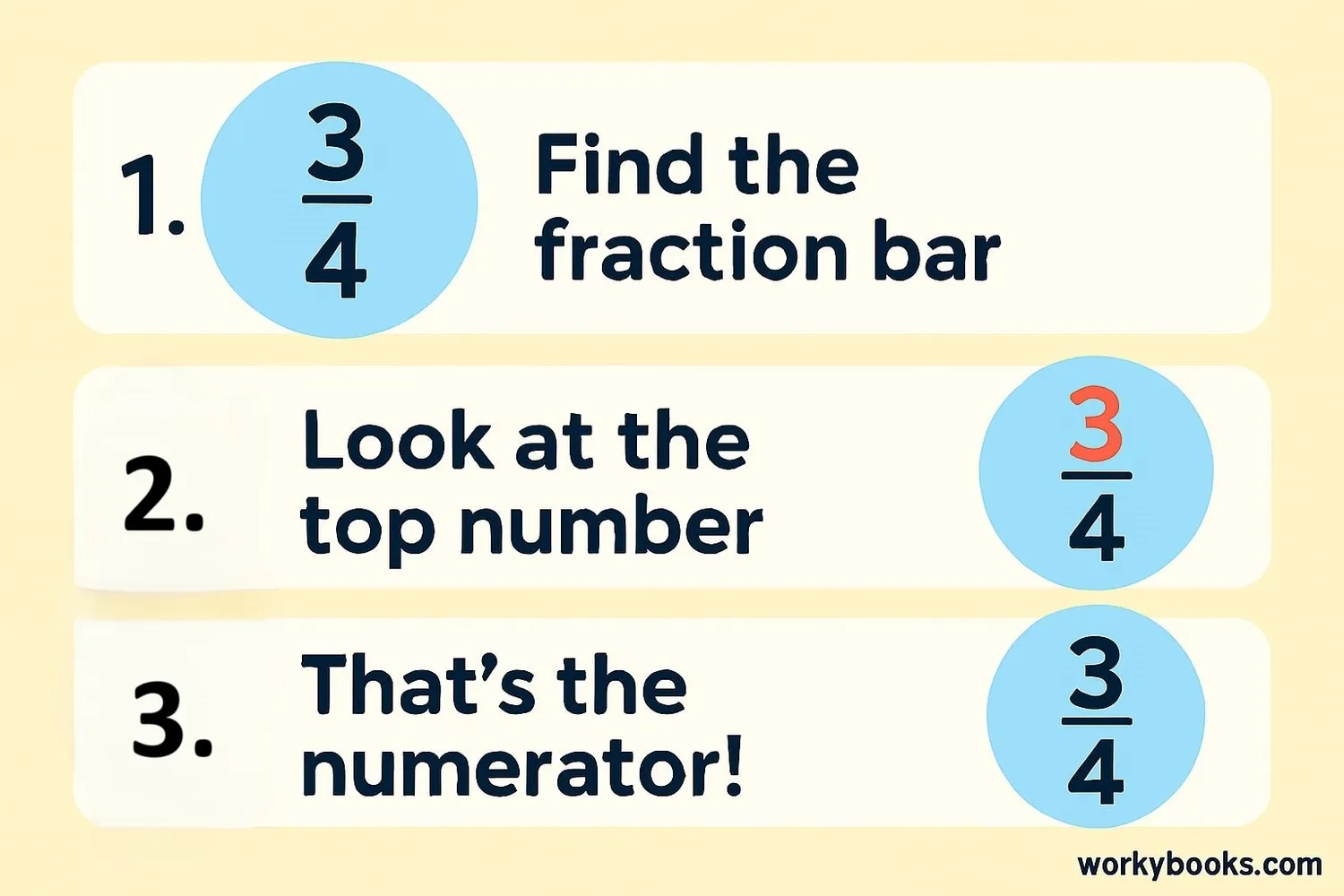Numerators - Definition, Examples, Quiz, FAQ, Trivia
Learn about numerators in fractions with simple explanations, visual examples, and practice activities
What is a Numerator?
The numerator is the top number in a fraction. It tells us how many parts we have out of the whole.
Think of a pizza cut into 4 equal slices. If you have 3 slices, the fraction is 3/4. The number 3 is the numerator because it shows how many slices you have.
The word "numerator" comes from a Latin word meaning "counter" or "numberer". It counts the parts we're interested in. In the fraction 5/8, 5 is the numerator and it tells us we have five parts out of eight.
Key Concept
The numerator is always the top number in a fraction. It represents the number of parts we have.
Numerator and Denominator
Fractions have two important parts:
Numerator - The top number (how many parts we have)
Denominator - The bottom number (how many equal parts make a whole)
Together, they form a fraction that shows part of a whole. The fraction bar between them means "divided by". So 3/4 means 3 divided by 4.
Remember
The denominator tells us the size of the parts - the bigger the denominator, the smaller each part is!
Numerator Examples
Let's look at some examples of numerators in different fractions:
One half
Numerator: 1
Three quarters
Numerator: 3
Two fifths
Numerator: 2
Five eighths
Numerator: 5
Example Tip
Notice that the numerator can be any number from 0 up to the denominator. When numerator = denominator, the fraction equals 1 whole!
How to Identify the Numerator

Identifying the numerator is easy once you know what to look for:
Step 1: Find the fraction bar (the line between two numbers)
Step 2: Look at the number above the fraction bar
Step 3: That number is the numerator!
Let's practice with some examples:
In ⅗, the numerator is 3
In 7/10, the numerator is 7
In ¼, the numerator is 1
Remember: The numerator is always above the fraction bar. If there's no fraction bar (like in decimals), it's not a fraction!
Practice Tip
Look for fractions around you - on measuring cups, in recipes, or on rulers. Practice identifying the numerator in each fraction you see.
Numerator Practice Quiz
Test your understanding with this 5-question quiz. Choose the correct answer for each question.
Frequently Asked Questions
Here are answers to common questions about numerators:
Fraction Trivia
Discover interesting facts about fractions and numerators:
Ancient Fractions
The ancient Egyptians used fractions as early as 1800 BC! They had special symbols for fractions with 1 as the numerator (unit fractions) and could express any fraction as a sum of these.
Numerator Origins
The word "numerator" comes from the Latin word "numerātor" meaning "counter". The word "denominator" comes from "dēnōminātor" meaning "namer" - it names the type of parts we have.
Fractions in Music
Musical notes are fractions! A whole note gets 4 beats, a half note gets 2 beats, a quarter note gets 1 beat. The denominator tells what fraction of a whole note each note represents.
Fractions in Science
Scientists use fractions constantly. The water molecule H₂O has 2 hydrogen atoms and 1 oxygen atom. The fraction of hydrogen atoms is 2/3 while oxygen is 1/3.





